#michael jordan exercises
Text
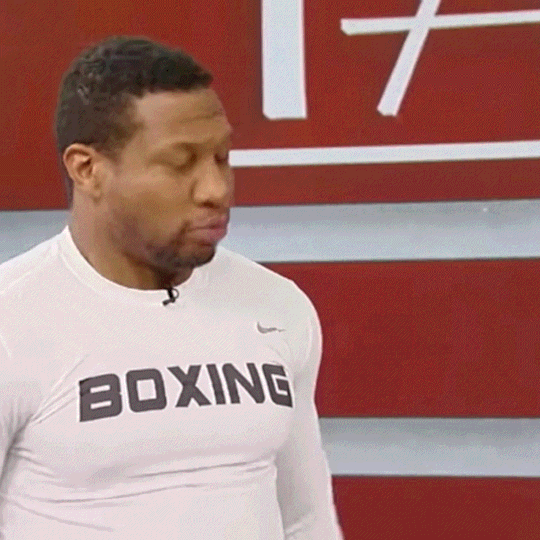




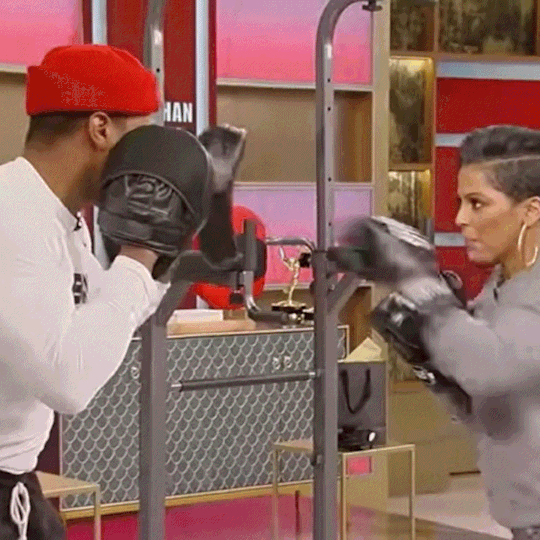
Jonathan Majors on Tamron Hall
#jonathan majors#creed 3#damian anderson#diamond dame#tamronhall#tamron hall show#press tour#boxing#women boxing#michael b jordan#talented#black actors#gifs#reupload#better quality gif#self defense#exercise#fitness#gym
55 notes
·
View notes
Text
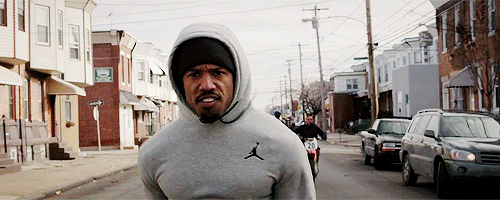
9 miles / 1hr 31 min 43 sec
Thought I'd give it a shot to go out and take my weekend training regiment to the park and hey... what do you know? I friggin' killed it! 4 more miles to go and 5 weeks left until the race. I think I got this.
#running#training#exercise#half-marathon#half marathon#13.1#run#creed#adonis creed#adonis#michael b jordan#gif#movie#movie gif#creed gif
3 notes
·
View notes
Text
recently anthony took me down the rabbit hole of tiktoks using a specific soundbite complaining about their art not going viral, and without fail almost every single one was just like, basic art school assignment type shit. lots of closeups of eyes and lips. some basic portraits. fruit. that sort of thing. displays of very real technical skill with zero originality. the way social media rots our brains as artists is very well documented - the endless myths about how to please an algorithm, the unhealthy fixation with metrics, the desire to develop an attention-grabbing art style right away instead of just working on the basics and letting your personal style develop naturally over time, etc. but to see people act like they're inherently owed internet fame for posting the most rote art exercises, as if tiktok virality is a meritocracy. god. something is broken here. you're treating art not as a means of personal expression but as a way to become popular on the internet. the further down anthony kept scrolling and the more examples we found the more insane it made me. like yeah gee why didn't your stippled photo study of michael jordan blow up on the funny meme dance app
4K notes
·
View notes
Text
Michael B Jordan x actress!reader
I fell in love with Killmonger again thanks to Wakanda Forever 💖😍 After rewatching my favourite Michael B Jordan movies, I couldn't help but disassociate a little bit. So, hope you enjoy it! 💘✨

│CASTING
Y/N always knew she wanted to be an actress. Since she was a little girl and watched with her grandmother some novelas, trying to memorize the lines so she could recite it late at night in her bed. She dreamed to one day star in one of the Hollywood films she had grown up watching; one day she would meet her favorite actors and, if she was lucky, perform alongside them.
At eighteen, with a scholarship for a theater course and her dreams, she moved to LA. The first few weeks were magical; everything was new, and she found herself walking through the locations of her favorite movies. The fantasies quickly ran out of steam; the scholarship was full but didn’t cover her expenses, and with her savings dwindling and the money running out like water, Y/N needed a job.
Luckily, a Mexican restaurant was hiring, so Y/N put her Spanish skills to use and got the job with a little persistence and kindness. Although it was a part-time position, she occasionally put in extra time to make up for going out to auditions.
It was her 100th casting test when her nineteenth birthday arrived. Her roommates sung "happy birthday" and bought her a cupcake. Wishing she had lucky, Y/N blew the candle.
◦ ◦ ◦
"They're looking for a Latina actress between the ages of 18 and 24." Julie, one of her roommates, said while grabbing a flyer. "They left it at the college; I thought you may give it a try."
“I guess; It won't harm to give it a shot.” Y/N muttered.
That's how she ended up in a chair, dangling her feet nervously, waiting her turn. Each girl returning from the test had a mixture of delight and disappointment on their faces, leaving her confused. Y/N reread the script for the fiftyth time when her name was called. Before stepping into the room, she took a big breath.
“So when you're ready, Y/LN.” As he sat down next to three other people, the producer spoke.
Y/N inhaled deeply, closed her eyes to get into character, and started reciting her lines.
"The real monsters don’t hide in the dark, under your bed, or in the woods." While speaking, she slowly raised her gaze. “They live with us; we pass them on the streets daily."
"The truly terrifying monsters are the ones who smile at you before stabbing your back."
Y/N clenched her jaw and took a moment to reflect.
"The real monsters are the ones we call family. The ones we trust with our darkest secrets and fears. Those who should be protecting us are the first to twist a knife in the face of our faults when we least expect it." As she spoke, tears started to form in her eyes.
Y/N expressed gratitude and waited for the producer's debate with his assistants. She wrung her hands nervously, doing a breathing exercise to keep calm.
"Well, we appreciate your performance, but we need to see if you get along with the cast." The producer spoke up, pulling out a piece of paper and holding out his hand. "Memorize these lines and return in about ten minutes.”
◦ ◦ ◦
When Y/N returned, someone was already standing in the center of the room. It was a tall man dressed in a sweatshirt ensemble, his face was tilted as he held the script in his hands.
"Ready, Y/LN?" The man turned around in response to the producer's question.
Y/N gasped as she realized that the person she would be acting with was Michael B. fucking Jordan. She brought her hand to her mouth to pull herself together, nodding her head for them to begin.
"You can't believe what they say; it's all just lies. They want to play with your mind, manipulate you so you won't be able to escape their sick game." Michael stated incisively.
"It's funny because they said the same thing about you." Y/N replied while focusing on his eyes. "Why should I believe you are telling the truth?"
"I’d never lie to you." When she turned away, he assured her.
“Well, it seems that they were right. You cannot prove your point.” Y/N said as she started to leave.
Michael held her arm, pulling her back into place and lessening the previous distance.
"And how did they prove it to you? What was the excuse, huh? that they are your family?"
Y/N anxiously bit her lip.
"I can't force you to believe what I say; that is your own choice to decide which course you will take.” Michael spoke while resting his hand on her chest's left side.
While struggling to hold his eyes, Y/N gasped, her heart beating and her cheeks flushed.
"Your heart will tell you what to do; follow your instincts, and if it decides to go beside me,” He held her chin with his other hand. “I'll be waiting for you."
The intensity of his words gave Y/N shivers, and she had to use all her self-control to keep from fainting in his arms.
“How can I tell if I'm making the right decision? “ As his palm touched her cheek, Y/N asked while tightly closing her eyes.
"You can't, but you've to believe in yourself." Her eyes opened as Michael ended the scene; they stared at each other for a few seconds before the producer exclaimed ‘cut’.
"Congratulations, then! You have the part. You’ll get an email with the information in two to three days.” After standing up to greet her, the producer spoke.
“Oh my goodness, thank you.” Y/N cheered enthusiastically. “Thank you so much, I won't disappoint."
The producer simply nodded his head in agreement and left. Y/N shouted enthusiastically while using a few brazilian swear words to express her happiness.
“I don't know what you said, but I hope it was cheerful.” Michael B. Jordan commented behind her, causing her to leap forward. “Oh my bad. I didn't mean to scare you."
"That's okay. I had my head in the clouds. It’s just hard to believe that this is actually happening.” Y/N admitted while grinning.
"Try to believe it; you did a great job and deserved that role." With a hand on her shoulder, Michael reassured her. "Catch you at the recording.”
Y/N shook her head, too stunned to speak. When she confirmed that she was the only one in the room, she whispered a hushed ‘porra’.
#michael b jordan#michael b. jordan#killmonger#michael b jordan x reader#imagine#actress!reader#latina
442 notes
·
View notes
Text
CAMP NANO DAY 14
[AO3]
========={·§·}=========
Bruce was going to regret coming to the watchtower today, he could tell. He could already feel the headache coming on.
"Okay, okay, next round! Fuck, marry, kill, billionaires who aren't total assholes! Michael Holt, Simon Stagg, and Bruce Wayne, I'll go first!"
Today's meeting was listed as team bonding. Playing preteen girl games was not what he'd had in mind.
"Oh you know I have to go with fuck Bruce Wayne, I mean, have you seen that man? He makes himbo look hot—"
Dick's not-so-silent laughter from his spot next to Bruce was not helping things in the least. If he didn't love his son as much as he did, and if he wasn't 100% sure Cass and Damian would murder him in his sleep if he did, he would have silenced his oldest one way or another after the third time he nearly fell out of his chair from laughing so hard.
"I'd have to say fuck Holt, marry Wayne, and kill Stagg, Lois would kill me if I said otherwise," Clark answered thoughtfully, though the smirk he was failing to hide bellied his amusement at the entire situation.
I should have kept the lead lining in the cowl, Bruce thought darkly as he fought not to glare at the Man of Steel while Dick finally succeeded in falling off his chair. The rest of the League, sadly, were already used to Nightwing's eccentricities and gamely continued on as they were.
"—marry Bruce Wayne so I can seduce his fortune from him—"
The Dark Knight had to exercise his iron self control to keep himself from groaning out loud at that comment. Please, for the love of Alfred, will someone pick to kill me?
"I honestly can't decide if I'd want to fuck Brucie or marry him more, they both have their advantages—"
Finally, it was his son's turn, and Bruce's dread grew by leaps and bounds. He knew that grin. He knew Dick was a full grown adult, but the urge to ground him had never been so strong and the younger man hadn't even opened his mouth yet.
"For reasons I will not be disclosing at this time but might possibly include the nickname potentials, I would fuck Mike, marry Brucie, and kill Simon. Thank you for coming to my TED talk!"
And then it was his turn. Bruce shot his son a Look, before turning to the rest of the League. Pretty much everyone else had gone already, and the urge to decline participating in this round was strong, very strong, but then Hal Jordan opened his mouth and issued a challenge. And if there was one thing raising so many kids had instilled in him, it was the inability to back down from a challenge.
"So, tall, dark, and scary, what'll it be? Are you going to marry Bruce Wayne so he can fund all of your sick gadgets, seduce his money from him like Plastic Man? Maybe you'll be a gentle lover to him like Aquaman here. Or maybe Brucie is the one person in the world you break your code for. Come on, what d'ya got for us?"
And Bruce—Bruce thinks about it. It's been years since he first joined the League, he's gone on countless missions with these men and women, trusted them to watch his son's back when he couldn't, and he finds his decision already made for him. Plus, there's another thing raising so many kids had given him—comedic timing. Discreetly checking to see if Dick was still recording, even after his mishap with the physics of sitting on a chair properly, Bruce turned to stare the Lantern down.
"Jordan, I have no desire to fuck, marry, or kill Bruce Wayne, either literally or figuratively."
Bruce could see the protests forming at the tip of the pilot's tongue. Clark diligently tried to suppress his own laughter while Dick was staring at Bruce in amazed glee. Before Hal could properly express his protests, Bruce reached up and removed his cowl, working his hand through his sweaty hair in annoyance before turning a deadpan look on the man, one eyebrow raised in a pale imitation of Alfred's Look.
"I trust you can understand why?"
As the collective members of the Justice League burst into shocked screeches of denial and protest, with Clark's warm chuckles and Dick's own roaring laughter acting as counterpoints to the background noise, Bruce couldn't help but smirk. He still felt a headache coming on, now from the noise rather than from the meeting itself, but overall, he can't say he regretted how it had turned out.
========={·§·}=========
So this one came from a pin I saw on Pinterest, which I sadly have not been able to find the original Tumblr thread for, about the League playing fuck, marry, kill with pre-identity-reveal!Bruce lol I read it out loud to my boyfriend, who ended up laughing as hard as I was, and he told me I should write it, so I did! ^_________^ If anyone wants to send me a link to the original thread so I can link it here, that'd be amazing, cuz I want to properly credit the people who inspired me to write this in the first place ( ◜‿◝ )♡
Also, I feel like I've been saying this a lot recently, but I apologize for not posting yesterday, I had a really long and fun day out with my boyfriend and ended up having neither the time nor the desire to write anything by the time we got back home ¯\_(⊙_ʖ⊙)_/¯ before he flew out here, I hadn't seen him in a month, and before that, it had been almost a year, so I'm making the most of the time I have with him (;^ω^)I don't think that's too much to ask for, but I also feel horrible about not writing and posting as much as I initially wanted to this month. I figure, by explaining myself to y'all, it might make it easier to convince myself it's truly okay to take time for myself and my boyfriend, y'know? 乁( . ര ʖ̯ ര . )ㄏ that's the hope, anyway lol
Have a good morning/day/night, everyone!
#batman#dc comics#justice league#pre identity reveal!Bruce#crack fic#fanfiction#Nightwing is part of the Justice League#the only people in the league who know Bruce's identity are Dick and Clark#batman au#rated m for language#i dropped a lot of f bombs in this one#haha oops#sorry about that#fanfic#Michael Holt is a real DC character#so is Simon Stagg#i know next to nothing about them though#camp nanowrimo 2023#camp nano 2023 day 14
111 notes
·
View notes
Text

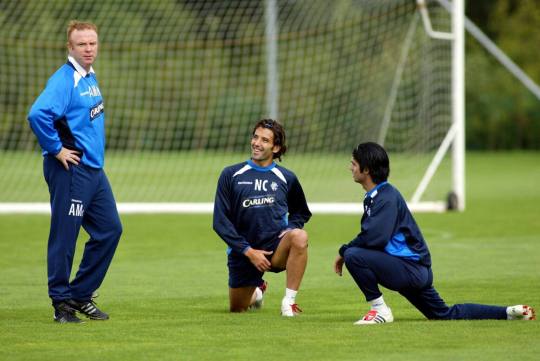


Mikel Arteta at Rangers and his title-clinching penalty: 'He pulled rank on everyone' - Jordan Campbell
As the go-karts whizzed around the chicane, each player was treated to the usual jeers and taunts from their Rangers team-mates waiting to race. Karting had become a regular team-building exercise for Rangers in the 1990s, but there was one unusual sight on this afternoon in 2002 that caused the rest of the squad to double-take.
“Mikel Arteta was driving one-handed. We couldn’t believe it,” laughs former Rangers full-back Maurice Ross.
“We gave him pelters at the time but, if we’re talking about coolness and being in control, then that was Mikel in a nutshell.”
His unassuming persona made an immediate impression, but fast forward to May 25 the following year and Arteta faces the most intense scrutiny of those qualities imaginable.
Heading into the final day of the 2002-03 season, Rangers and Celtic are neck and neck. Level on 94 points and inseparable on goal difference, the only column that differs is that Rangers have scored 95 and Celtic have scored 94.
It is a minor advantage, but with 92 minutes on the clock, Rangers 5-1 up at Ibrox against Dunfermline Athletic and Celtic 4-0 up at Rugby Park, that was still the only difference. A last-gasp goal for Celtic would see the helicopter carrying the trophy turn west to Kilmarnock.
Cue a 93rd-minute penalty to Rangers. All eyes are now on who would dare to be the hero.
Twenty-year-old Arteta. He casually strokes the ball into the bottom right corner, sending goalkeeper Derek Stillie the wrong way, and produces the most iconic of images with his celebration.

Shaking both of his hands wildly above his head, fingers splayed like a raptor, he sprinted towards the jubilant fans at the Copland Road end. He pulled down his shirt from the badge and threw a fist pump like an uppercut before being swarmed. Rangers were champions of Scotland for the 50th time.
“My brother-in-law gave me a picture of that moment and enlarged it. I’ve got it in a frame in my house. I can still hear the noise through it now,” his then-manager Alex McLeish tells The Athletic.
The mystery? How the baby-faced Spaniard, mostly seen and not heard, ended up with the ball in his arms.
He was in a team of big names including Lorenzo Amoruso, Arthur Numan, Barry Ferguson, Claudio Caniggia, Shota Arveladze, Ronald de Boer and Michael Mols. Only Caniggia and Mols were not on the pitch at that moment and even their replacements, 29-year-old Neil McCann and Scotland striker Steven Thompson, may have had cause to claim the ball.
Granted, Ferguson had missed two in one game against Dundee the month earlier, which saw Arteta take the third penalty and score, but under such pressure, it would have been natural to revert to authority.
“He pulled rank on everybody. Ronald must have said, ‘Let him take it, he’ll bury it’,” adds McLeish.
“Who, me?” asks De Boer. “No, he just took the ball. That says something about his personality.”
“No one argued. There was a confidence in him within our team. We had no doubt he was going to score,” adds Australian centre-back Craig Moore.
Within a year of joining from Barcelona, Arteta had earned the trust of his seniors and cemented his place in Rangers folklore.
How Rangers managed to lure him to Glasgow surprised even those who brokered the deal, but how his time in Scotland was limited to just two seasons — and a tale of two halves — is a source of frustration for some ex-team-mates.
(Second photo) Arteta (right) chats to Emerson (left), Nuno Capucho and Michael Mols in training (Photo: Alan Harvey/SNS Group via Getty Images)
His move only came about due to Rangers being drawn to face Paris Saint-Germain in the third round of the UEFA Cup in November 2001, which saw manager Dick Advocaat request a report from chief scout Ewan Chester. He went to watch PSG twice, away from home in freezing conditions, and returned with the message to look past the glamorous names. ‘Young Arteta is their most influential player’, his report read.
After two legs, in which Arteta delivered an outstanding performance at Ibrox, Rangers went through on penalties. It was a huge feat but when McLeish took over the next month, the talk was still about the boy with jet-black hair and blushed cheeks who had strolled around the pitch as if he owned it.
“He was so mature. You could immediately see he came from that Barcelona background. I thought, ‘Who is that guy?’,” De Boer tells The Athletic.
McLeish knew he had to use his finite resources wisely come the summer and so he sought counsel from two wise heads. His assistant Andy Watson provided a glowing review but McLeish sighed when he read his defined position was a holding midfielder.
“I knew right away that would be a problem as we had a phenomenal player of our own making in Barry Ferguson,” McLeish says.
“Could the two of them play together? Andy thought not. He said he was a nice footballer and never really got troubled in the game but it would probably be difficult for him in Scotland.
“So I got Ronald in the office and asked if he thought he could play in different positions. He said he could play anywhere and that he would be a tremendous signing.”
PSG had first refusal on him but Rangers splashed £6million on Arteta. They had finished the previous season strongly by winning both domestic cups, but Celtic had won back-to-back leagues.
There was not a huge influx of players to wrestle back the title, though. Kevin Muscat on a free was the only other signing. All the eggs had been placed in Arteta’s basket.
So when the Spaniard scored six minutes into his first Old Firm derby, a fixture that can define players good or bad, a few sighs will have been let out in the boardroom. “It’s as if you’re in a washing machine at a thousand miles per hour,” Arteta poetically described in 2019, after choosing it as the most ferocious derby he had played in.
(Third photo) McLeish (left) with Nuno Capucho and Arteta in training (Photo: Nick Ponty/SNS Group via Getty Images)
“I try to dictate play, but in that game, you can’t. Don’t even bother. It doesn’t stop. One touch, bam! Next touch, boof! Tackle, shot, corner, we go again! It’s nuts.”
McLeish’s assistant, Jan Wouters, had been a key figure in convincing Arteta he would fit in despite telling him to get ready for 90 minutes of being chased.
“He played his own game with one and two touches,” he says. “Sometimes, you don’t need words to see how important a player can be on the pitch. He took the lead by showing, ‘This is how we want to play, the combination play’.
“It’s a gift. You can learn but only if you have the talent for it. Players around him could see he was a fantastic player and that made it easy to accept if he said something.
“Players were physical with him but he could be mean if needed, too, don’t forget that. He would be tricky with it so no one noticed it.”
His own team-mates wanted to test his mettle and see if he was ready for the cauldron of Scottish football.
“He was quite slight, so in his first session I tried to go in and nick the ball from him,” says former full-back Maurice Ross.
“But he had this ability like a basketball player where they show it with one hand and then shift it to the other side of their body so you can’t see it or get round him. That was when you realised just how strong his legs were.
“It was normal to be roughed up. No one was given special treatment. Billy Dodds’ wife used to stay behind the training ground and one day she said, ‘What the hell was happening in training today with the noise?’. That was just Scotland boys vs the rest of the world. It was like a cup final most days, it was mental.”
Arteta’s ability won him respect instantly, but his team-mates speak of a player who appeared to be acutely aware of the hierarchy he had entered.
“He hardly spoke apart from the few he got close to as he was a quiet boy… but he had this stare,” says Ross.
“That can lead to people thinking, ‘Oh, he’s a bit mysterious, a bit deep, a bit aloof, maybe he doesn’t want to talk to us’. But he just didn’t get involved in the extra stuff and I admired him for that. It wasn’t bravado or forced, it was just this calm authority. He just knew he was the mustard.”
Arteta was friends with Argentinian winger Claudio Caniggia as they could speak in Spanish, and Georgian defender Zurab Khizanishvili says he and his wife often went for dinner with Arteta’s now-wife Lorena Bernal at popular Glasgow haunts O Sole Mio and Il Pavone.
They were both young and adjusting to the pressure and spotlight.
“At Rangers, you have to win every game. All I ever heard before a game in the dressing room was ‘three points’. Alex McLeish would say, ‘I don’t care how, I just need three points’, even if it was against Man United,” says Khizanishvili.
The person who got to know him best, though, was De Boer. Having spent a season at Barcelona in 1999 before joining Rangers, he felt duty-bound to make sure Arteta settled in Scotland.
“I had the father-son role,” says De Boer.
“Me and my wife took him everywhere with his girlfriend and got on really well, so I took him under my wing. He was a great son. Humble and always wanted to listen and learn.
“You saw some moments where you could see him maybe thinking, ‘What am I doing here?’. But there were other times I thought, ‘Jesus, he’s really stepping up now and doesn’t give in’.”
De Boer describes a little “shoulder rubbing” with Ferguson over who was seen as the main catalyst in possession, but Ross says their egos worked “silently in the background” to propel each other.
It was an interesting jigsaw as Ferguson was ‘Mr Rangers’, the heartbeat of the team who constantly demanded the ball incessantly and represented everything the club stood for in a city where symbolism is king.
“In the first season, we deployed Mikel on the left with the freedom to come inside and interact with Barry while supporting the front men,” says McLeish.
“It worked absolutely amazingly for us. Barry ran the show and Arteta was the playmaker coming in on his right foot. He was a revelation. If he had played central midfielder for us he would have been kicked all over the place.
(Fourth photo) Ferguson (second right) and Arteta learned to work together in midfield (Photo: Matthew Ashton/EMPICS via Getty Images)
“The game was tougher then — referees let you get away with a bit more. Celtic were a big strong team, so it may have been a bit too much in a defensive midfield role. We played him in the right position for that moment.”
Rangers won a domestic treble and Arteta played 35 times, scored five goals and looked every bit the superstar they were hoping he would be. But De Boer maintains that it still wasn’t the optimal solution.
“People said he couldn’t stand the physical part of the game, but I told people to give him time as I only learned what football really was at 20. He was a raw diamond, we just had to polish him,” says the Dutchman.
“In the beginning, it should have been 60 per cent Ferguson to demand the game and Mikel 40 per cent, but as his level progressed, by the end it should have been 60 per cent Mikel the playmaker as he had more skills.
“Barry was a tremendous player box to box but the real artistry was Mikel. They wanted to give Ferguson that role but that was a mistake in my eyes.”
Come the second season, that was a moot point. Arteta was now in a very different team.
It was widely appreciated that Rangers were looking to raise funds, but McLeish had half of his team gutted. Ferguson and Amoruso were sold to Blackburn Rovers, McCann moved to Southampton, Caniggia went to Qatar and Numan retired.
Half the senior starters exited and Rangers spent less than £1million on refreshing the squad as Sir David Murray attempted to cut the wage bill amid rising debts. Arteta even came out publicly to deny claims from Rangers executives that he had asked to go back to Spain.
“I was worried beforehand about the crowd’s reaction, but I love these fans,” Arteta said in August 2003 after a starring performance against Kilmarnock.
“I never said I would like to leave here in the first place. I only ever said that one day I would like to go back to Spain and it’s normal to want to return home sometime. But I am in no hurry. It would be impossible to leave now.”
He remained and took up the mantle from Ferguson at the heart of midfield, but Rangers were a shadow of the team from the previous season. They finished 17 points adrift of Celtic, losing all four league derbies, and failed to reach either of the domestic cup finals.
“This was his chance to play central midfield but I was playing a young cultured player who hadn’t been through the wars and learned to cope himself,” says McLeish.
“We put him to the forefront. Him and Stevie Hughes (a 22-year-old academy player) played in the middle of the park against Manchester United in the Champions League. They got a wee lesson that night against Roy Keane and Scholes but they were valuable.
“He was hugely respectful at all times. We gave him the perfect solution in the first season and a not-so-perfect one in the second season with a depleted squad. He didn’t quite have the shoulders to lean on.”
Arteta left for home at the end of his second season, moving to Real Sociedad for a fee below what Rangers paid for him. It was a crime that Rangers didn’t retain a player of his ability for longer — as De Boer believes they could have if the club had made him feel more important — or at least capitalise on that talent by making a profit.
The official line at the time was that he was homesick, but it was a curt goodbye for a young player who delivered the classiest of debut seasons. Had he stayed for longer, Arteta would have been held in the same esteem as many less talented foreign players are, but as Craig Moore knew after his first few sessions, this was a boy destined for the top.
This article is part of a series on Arsenal manager Mikel Arteta which will be published during the international break. The next feature is scheduled for Monday.
Artwork: Sam Richardson, using Getty Images
#Mikel arteta#Arsenal#Footieposting#Maybe I should create an athleticposting tag#The Athletic#I deffff reccomemd watching the clip of him scoring the pen I just didn't want to screen record and embed bc i always have trouble with vid#Start at like 1:34:23#If it doesn't start there from the link. Sorry#Also i added the Pic of him doing the celly#It just seemed like it needed to be there
26 notes
·
View notes
Text
18 / 11 / 2023
HERCULES PLAYED BY MICHAEL B. JORDAN? 🤨 WHAT I THINK ABOUT IT 🧐
Hey dear readers! 😁
So... You probably read it somewhere else, or not, but it seems the gorgeous American actor Michael B. Jordan will probably plays the role of Prince Hercules in the future live-action movie adapted from the amazing Disney animated movie HERCULES (1997).
I wanted to tell you my top list of my favorite on-screen Hercules and ask you who is yours, but since i can't makes two games in one post, I want to ask you first what you thinks of Michael B. Jordan chosen by Disney as Prince Hercules for the live-action.

I love Hercules from Disney, to me he is really well written : physically he is handsome and hot, but he is more than that, he is also kind, funny, shy which makes him relatable. Even though he becomes stronger than everyone, he just wants to know what he is good for, where is his place, what he should do in life to be useful to others and happy for himself. That's things most people (especially young, but not only) can relate to. And the movie in itself helped going through bad things, whether for its message and good vibes, and also thanks to the humor, the songs, the characters (Megara is an amazing heroine, Hades is one of my favorite Disney vilain)!
If you want to know what i like about Michael B. Jordan, don't hesitate to read this article.
Apparently the executive producers have to chose between him and the handsome British actor Taron Egerton. Even though i like Taron Egerton as an actor, i don't think he is muscled or tall enough to plays Hercules. However, he would be better as playing Hercules as skinny and as muscled, because the protagonist is supposed to become stronger (unless they do what has been done for Steve Rogers before being Captain America, which is taking a skinny actor to play the role). He isn't that skinny too, so if he do exercise he could play him.

Michael B. Jordan is absolutely gorgeous, so of course I'm happy that he'll play in a Disney live-action, and we live in a time where this news isn't surprising.
In the MCU, it isn't the first time a Black person plays a White character (Nick Fury, Heimdall, Valkyrie, and now Namor played by a Latino actor and soon Sentry by an Asian man). I doesn't complain about race swapping in the MCU because it's adaptation and fictional characters. As for Michael B. Jordan, he already played a white character : Johnny Storm / Human Torch in the FANTASTIC 4 movie.
If you want to read a story about Michael B. Jordan as a dominant gay man and an interracial love story where, for once, the white man isn't a weak submissive, read this :

The thing is that Disney is more famous and probably more loved than Marvel so a single change in the characters will be analyzed. Hercules is not only a great Disney character, he is first a Hero in the Greek mythology (known as Herakles), and the God of Strength in the Roman mythology. And i know History and Mythology so believe me when i tell you there wasn't so many Black people in Grece at that time. That doesn't mean we can't include Black actors in movies. For example, in the (horrible) Netflix series TROY - FALL OF A CITY, Achilles, Patroklus, Eneus and even Zeus has been played by Black actors for the first time ever!
We are far from Brad Pitt who played Achilles in the movie TROY.
But, believe me, Greek people - and maybe Italian too - will complain again when they'll see a Black man playing one of their most known character.

Disney already did race-swapping with Ariel and her sisters in the live-action THE LITTLE MERMAID, so I'm not surprised anymore. We have to ask ourselves if Disney hire Michael B. Jordan for his (obvious) talent, his (incredible) celebrity, his (stunning) strength, his (beautiful) body, or juste because he is a Black man and Disney want to change mentalities? Does Black men would even feel more represented by seeing a Black actor chosen to play a white character instead of creating a new Black hero with his own story?
Or they could also make live action about Black characters instead of doing race swap because that will create more racism, to my opinion, or more division between races : some white persons wants him to play Hercules and some Black people thinks a white man should plays a white man. So, who is right? Who should be listened? 🤔 Maybe what's racist is to give to Black actors white characters to plays as if Black men weren't inspiring enough. It's only my opinion.
Here is a list of actors who could play Hercules
Even if there is many Black actors who would be awesome in this role, at least Michael B. Jordan would be great as Prince Naveen of Maldonia from Princess and the Frog (2009) if Disney decided to make a live action of it. He is handsome, cocky, kind and funny so it wouldn't be difficult to imagine. Right? 🤨

If there is Black character who would be amazing if he was played by Michael B. Jordan, it's undoubtedly Val-Zod from DC. Mostly known as the "Black Superman", I considers him worthy of being in cinema. Apparently there was a project of this movie and i even wanted to write a story about him.
That would be incredible to see a new black superhero, and these fanarts are inpiring! If you have any plot idea about Val-Zod, tell me! I've thought of an interracial gay love story since he is supposed to love Supergirl, but maybe Val-Zod could love a male Lois Lane!


What's disturbing with the choice of Michael B. Jordan as Prince Hercules (again, if that happen) is that white men seems to be voluntary erased by Disney to show Black men as betters. Think about it : if a white man is cast as Hades (despite being Hercules's uncle) and a black man as Zeus, that would clearly mean that white men are the devil and black men are our saviors! It was already my problem with the THE LITTLE MERMAID live action (Ursula, King Triton and his daughters being almost all non-white persons), which isn't realistic. And tell me that you can do everything you want with fiction, you have to stay at least logical.

The reason why i am not sure that I'm against Michael B. Jordan hired to play Hercules is that I'm a brainwashed snowbunny whiteboy interracial addict who clearly worship Black men so i am so confused and don't know if it's treason or stupidity to like this choice, or if it being acceptive and liking Black men. I honestly don't know what to think until I'll see Michael B. Jordan as Hercules.
That's why i makes you plays this game.
So, to me, a Black actor shouldn't be prevented to play a white hero, but when this one is very famous for having a particular body (and for once a white hero could be a strong alpha male), i don't find this choice clever. However, Michael B. Jordan have the good personality like Hercules and his life has been almost the same : from nothing and a skinny underestimated boy, he became a hot famous actor (he already have his star on the Walk of Fame : read my Man Of The Day article if you want to know more about it), thirsted on by almost everyone! He is Hercules! But should he be the Disney Hercules? I don't know. I still wait to know it.

Here is another game with Michael B. Jordan
And another one
The Disney movie inspired me this story
Part 1
Part 2
And here is a story about Hercules in Marvel
@michaelbjordan @michaelbjordans @michaelbjordan-news @michaelbjordanrps @leftprogrammingroadtripdean @tidodore2 @blacksuperiororer @ir-4-life @ir-beauty @blacksupremacyforever @blackmenrule @whiteboyscantfuck @innerpiratefun @gayhopefullove @lovefanfiction01 @whiteboylovesblack @blackmenrevenge @snowbunnysfantasies @blackmasculinitywhitefemininity
#Michael B Jordan#Michael B. Jordan#Black Panther#Panthère Noire#MCU#Disney#Hercules#Prince#King#Roi#Dieu#God#Mythology#Acteur#Actor#Homme noir#Black man#florian munteanu#Interracial#Gay#Game#Jeu#Article#Post personnel#Personal post#Movie#Cinema
5 notes
·
View notes
Text
47 books read this year:
The Andromeda Strain by Michael Crichton
The Creative Habit by Twyla Tharp
Fairy Tale by Stephen King
The Immortal Life of Henrietta Lacks by Rebecca Skloot
The Year Of Magical Thinking by Joan Didion
Tomieby Junji Ito
Last Exit to Brooklyn by Hubert Selby Jr
The Metamorphosis and other stories by Franz Kafka
The Book of Accidents by Chuck Wendig
Five Children and It by Edith Nesbit
Who Fears Death by Nnedi Okorafor
Trannyby Laura Jane Grace
Crime and Punishment by Fyodor Dostoyevsky
The Great Gatsbyby F Scott Fitzgerald
Blue Nights by Joan Didion
Hard-boiled Wonderland and the End of the World by Haruki Murakami
A Christmas Carol by Charles Dickens
Speech Therapy by The Captain
The Strange Case of Dr. Jekyll and Mr. Hyde by Robert Loius Stevenson
The Complete Book of Running by James F Fixx
The Conan Chronicles: Volume 1: The People of the Black Circle by Robert E. Howard
The Space Between by Rachel Sanderson
Man's Search For Meaning by Viktor E Frankl
Japanese Language by Haruhiko Kindaichi
Half a King: Shattered Sea Book 1 by Joe Abercrombie
Gotta Get Theroux This by Louis Theroux
The Ballad of Black Tom by Victor LaValle
The Bloody Chamber by Angela Carter
This is Going to Hurt by Adam Kay
Watchmen by Alan Moore
Trust Exercise by Susan Choi
The Cement Garden by Ian McEwan
An Anthropologist on Mars by Oliver Sacks
Yellowface by RF Kuang
120 Days of Sodom by Marquis de Sade
A Study in Scarlet by Arthur Conan Doyle
Sellout by Dan Ozzi
War of the Worlds by HG Wells
A Malazan Book of the Fallen Collection 1 by Steven Erikson
Alanna: The First Adventure by Tamora Pierce
M is for Magic by Neil Gaiman
Fool’s Errand by Robin Hobb
Where the Mountain Meets the Moon by Grace Lin
Into the Wild by Jon Krakauer
The Subtle art of not giving a F*ck by Mark Manson
Educated by Tara Westover
The Shape of Water by Guillermo Del Toro
I still have 9 books that are currently in progress but I won't finish before the end of the year:
The Path of Daggers by Robert Jordan
The Devil in the White City by Erik Larson
The Way of Kings by Brandon Sanderson
The Innocence of Father Brown by GK Chesterton
The Passion of Marie Romanov by Laura Rose
The Never Ending Story by Michael Ende
Flatland by Edwin A Abbott
Don't Panic by Neil Gaiman
Curse of the Pharaohs by Elizabeth Peters
My TBR list is still enormous at 507 books.
I'm considering doing the Book Riot reading challenge again this year. I've done it once before a few years ago and it was nice to have some structure to my reading for the year, but I also remember being happy to get back to my own choices when it was over.
2 notes
·
View notes
Text
With their new majority, House Republicans are planning to take on “woke capitalism.”
“Republicans and their longtime corporate allies are going through a messy breakup as companies’ equality and climate goals run headlong into a G.O.P. movement exploiting social and cultural issues to fire up conservatives,” Bloomberg reports. “Most directly in the G.O.P. cross hairs is the U.S. Chamber of Commerce, which is under pressure from the likely House Speaker Kevin McCarthy to replace its leadership after the nation’s biggest business lobby backed some Democratic candidates.”
I wrote last year about this notion of “woke capitalism” and the degree to which I think this “conflict” is little more than a performance meant to sell an illusion of serious disagreement between owners of capital and the Republican Party. As I wrote then, “the entire Republican Party is united in support of an anti-labor politics that puts ordinary workers at the mercy of capital.” Republicans don’t have a problem with corporate speech or corporate prerogatives as a matter of principle; they have a problem with them as a matter of narrow partisan politics.
That the governor of Florida, Ron DeSantis, railed this week against the “raw exercise of monopolistic power” by Apple, for example, has much more to do with the cultural politics of Twitter and its new owner, Elon Musk, than any real interest in the power of government to regulate markets and curb abuse. (In fact, DeSantis argued in his book, “Dreams From Our Founding Fathers,” that the Constitution was designed to “prevent the redistribution of wealth through the political process” and stop any popular effort to “undermine the rights of property.”)
Nonetheless, there is something of substance behind this facade of conflict. It is true that the largest players in the corporate world, compelled to seek profit by the competitive pressures of the market, have mostly ceased catering to the particular tastes and preferences of the more conservative and reactionary parts of the American public. To borrow from and paraphrase the basketball legend Michael Jordan: Queer families buy shoes, too.
Republicans have discovered, to their apparent chagrin, that their total devotion to the interests of concentrated, corporate capital does not buy them support for a cultural agenda that sometimes cuts against those very same interests.
Here it’s worth noting, as the sociologist Melinda Cooper has argued, that what we’re seeing in this cultural dispute is something of a conflict between two different segments of capital. What’s at stake in the “growing militancy” of the right wing of the Republican Party, Cooper writes, “is less an alliance of the small against the big than it is an insurrection of one form of capitalism against another: the private, unincorporated, and family-based versus the corporate, publicly traded, and shareholder-owned.” It is the patriarchal and dynastic capitalism of Donald Trump against the more impersonal and managerial capitalism of, for example, Mitt Romney.
To the extent that cultural reactionaries within the Republican Party have been caught unaware by the friction between their interests and those of the more powerful part of the capitalist class, they would do well to take a lesson from one of the boogeymen of conservative rhetoric and ideology: Karl Marx.
Throughout his work, Marx emphasized the revolutionary character of capitalism in its relation to existing social arrangements. It annihilates the “old social organization” that fetters and keeps down “the new forces and new passions” that spring up in the “bosom of society.” It decomposes the old society from “top to bottom.” It “drives beyond national barriers and prejudices” as well as “all traditional, confined, complacent, encrusted satisfactions of present needs, and reproduction of old ways of life.”
Or, as Marx observed in one of his most famous passages, the “bourgeois epoch” is distinguished by the “uninterrupted disturbance of all social conditions.” Under capitalism, “All that is solid melts into air, all that is holy is profaned, and man is at least compelled to face with sober senses his real conditions of life, and his relations with his kind.”
In context, Marx is writing about precapitalist social and economic arrangements, like feudalism. But I think you can understand this dynamic as a general tendency under capitalism as well. The interests and demands of capital are sometimes in sync with traditional hierarchies. There are even two competing impulses within the larger system: a drive to dissolve and erode the barriers between wage earners until they form a single, undifferentiated mass and a drive to preserve and reinforce those same barriers to divide workers and stymie the development of class consciousness on their part.
But that’s a subject for another day and a different column.
For now, I’ll simply say that the problem of “woke capitalism” for social and political conservatives is the problem of capitalism for anyone who hopes to preserve anything in the face of the ceaseless drive of capital to dominate the entire society.
You could restrain the power of capital by strengthening the power of labor to act for itself, in its own interests. But as conservatives are well aware, the prerogatives of workers can also undermine received hierarchies and traditional social arrangements. The working class, after all, is not just one thing, and what it seeks to preserve — its autonomy, its independence, its own ways of living — does not often jibe with the interests of reactionaries.
Conservatives, if their policy priorities are any indication, want to both unleash the free market and reserve a space for hierarchy and domination. But this will not happen on its own. The state must be brought to bear, not to restrain capital per se but to make it as subordinate as possible to the political right’s preferred social agenda. Play within those restraints, goes the bargain, and you can do whatever you want. Put differently, the right doesn’t have a problem with capitalism; it has a problem with who appears to be in charge of it.
There is even a clear strategy at work. If you can stamp out alternative ways of being, if you can weaken labor to the point of desperation, then perhaps you can force people back into traditional families and traditional households. But no matter how hard you try, you cannot stop the dynamic movement of society. It will churn and churn and churn, until eventually the dam breaks.
#us politics#news#the new york times#jamelle bouie#op eds#2022#Florida#gov. ron desantis#gop#Republicans#conservatives#karl marx#marxism#communism#socialism#Dreams From Our Founding Fathers#us constitution#labor#fuck capitalism#anti capitalism#capital#capitalism#anti capitalist#feudalism#worker's rights#working class
17 notes
·
View notes
Text
Hola mi amigos!
Hello, my friends! Thank you very much! Naimbag a bigat yu amin! Hi, I'm Ervin Jasper A. Jacobe, 20 years of age, from San Esteban Alcala, Cagayan. I am taking a Bachelor of Elementary Education at SPUP and I am currently in my 3rd year of college. An interesting thing about me is that I love beatboxing, which I have learned how to do since I was in 7th grade. Another thing that I love to do is calisthenics, because it is very convenient, especially for a student like me that loves exercise. My other interests are biking and watching series, especially on Netflix and Kdramas. My favorite sports are basketball and badminton, in which I try to get the mindset of Michael Jordan, the Goat (Greatest of all time) of basketball. Even though I am fair-skinned, you may mistake me for avoiding the outdoors, which is the complete opposite. I also love running, so you may see me often at the Cagayan Sports Complex when it's my free time. The instruments that I can play are the ukulele and the guitar. I mean, I can only play average songs. I think that is all that I think of. Oh wait, I also love watching anime. Next to the question, where do I see myself 5 years from now? I think that I would pass the boards on my first try, and I would be able to teach in the meantime in a private school before moving to DepEd. Another vision that I see is that I would still pass the boards, but I would use it for the tri bureau, either BFP, PNP, or Bjmp. I see myself having a car, specifically a Honda City or Honda Civic. But I would also first have my motorcycle before that, either a Honda Adv, Click, or Nmax. I see myself having a girlfriend. I hope that my future relationship will be a happy one. Was my learning in Spup vital to where I was led to? Of course, no matter where I am, I will carry my Paulinian education with me. As they say, even though we have graduated, we are still Paulinian for life. The next question is, was my course the best choice after all? At first, I was anxious about my course, but after all that we’ve been through, I think that I am loving it. Even though I'm anxious about my future, I think I’ve picked the best course for me. I began as a medical course student before abruptly shifting into the Education department. I am aiming for a life that benefits others and myself. I want to help my parents and make them proud of me. Honestly, I am still far from reaching my dreams, but looking back to where I started, it seems that I am slowly reaching my destination. Life is not about competing with others; we each have our own timeline to live on. Just trust in God, yourself, and work hard to achieve your dreams. But the important reminder is to also love yourself because, at the end of the day, what you do to your body will also reflect later on.
2 notes
·
View notes
Text
BD Wong and Simu Liu (couple of Asian actors), Sam Richardson, Michael B Jordan, Russell Wilson and Ciara (couple of black actors, black R&B/pop star and black football player, one of the Seattle Seahawks team) and even Chris post a tweet and Instagram post about his loving tribute to his fellow Marvel actor and good friend the late Chadwick Boseman whose since passed away from cancer back in August 2020. Chris is not an homophobe/transphobe like you losers claimed false evidences because he's friends with Kate McKinnon and Lena Waite (couple of bisexual and lesbian actress), Chris is not dissed disabled people because he post an apology video to deaf people with sign language. Unfortunately, internet people fell on deaf ears. Chris loves his son Jack because he was born prematurity and nearly death almost 10 years ago, so his father and his 1st mom prayed super hard for his recovery after leaning his prognosis is heartbreaking servere. Chris loves his kids after that lovey dovey post of his 2nd wife you losers are twisted in. He and Anna are good friends and successfully co-parents unlike Angelina Jolie and Brad Pitt and Kim Kardashian and Kayne (whose he was an jerk rapper for dissing Taylor Swift at MTV Video Music Awards 2009 and that Harriet Tubman comment during his unsuccessful 2020 presidential campaign) West. Anna and Katherine Schwarzenegger are good friends (no bad blood between the ladies). If you guys don't like Chris Pratt, then don't watch his movies or follow him on social media platforms. If his upcoming movie Jurassic World: Dominion alongside his Jurassic friends earned big billion bucks and Chinese movie acceptance (deja vu when back in Christmas 2017 Coco premiere in China. Chinese people originally didn't like the movie but walked away loved it. Last year's Encanto was not bad but very likeable movie that Chinese people watch), Pratt haters can cope, defeated, crying like an immature babies Whitney Thore style and stay mad. Pratt haters... hear me out... shut the fuck up and exercise, ya fattest, crybaby, nastiness lazy, pink-haired, ugliest nerds!!!
#jurassic world dominion#guardians of the galaxy#owen grady#star lord#peter quill#chrisprattdidnothingwrong#chris pratt#antiantichrispratt#prochrispratt#my rants#tw rant
4 notes
·
View notes
Text
Ropeless Battle Ropes
Ropeless battle ropes are the newest most exiting and innovative home gym fitness equipment of the decade.
Air Ropes ropeless battle ropes allow you to replicate and replace all the movements and benefits of traditional battle ropes without the big heavy awkward ropes and the large amount of space they usually require.
Meaning you get all the positive effects with none of the hassle.
Results Like The Pros
Imagine being able to get the fitness inducing, calorie burning, metabolism raising, muscle toning and core strengthening benefits of conventional battle ropes enjoyed by so many athletes, sports stars, celebrities, fitness professional and gym goers… anywhere, anytime, WITHOUT the ropes.
That’s the power of Air Ropes ropeless battle ropes.
Whether at home, at the office, on-the-go travelling, you an use this convenient portable hand-held fitness invention ANYWHERE for a quick, efficient and effective fat burning workout like no other.
There’s very good reason BIG name stars like:-
Dwayne ‘The Rock’ Johnson
Thors Chris Hemsworth
Captain Americas Chris Evans
Creeds Michael Jordan Junior
James Bonds Daniel Craig
Baywatch’s Zak Efron
Plus so many other well known hollywood actors all use battle ropes to get in peak physical condition and shape for blockbuster movies…
They WORK!
But…
The Problem With Traditional Battle Ropes
Traditional battle ropes are big, heavy, take up a lot of space and can be a pain to use and store.
Air Ropes ropeless battle ropes solve this problem and makes training and working out with battle ropes more accessible and practicle for more people in more places.
Anything you can do with traditional battle ropes you can do with Air Ropes ropeless battle ropes.
SMART Fitness Tech
Plus, Air Ropes are a digital smart fitness device…
Meaning they are fitted with a digital tracker to record every rep, every rotation, every minute of exercise and every calorie earned and burned.
They send all your performance data directly to the exclusive Air Ropes App where you can see your performance in real time and see your progress each and every time you use them.
So nothing’s left to chance and you can see your progress on screen which guarantees you get fitter, burn more calories and improve over time.
The Air Ropes App also has tutorial videos, an extensive exercise library (with beginner, intermediate and advanced movements) and free ropeless battle ropes workouts and fitness challenges.
Air Ropes Work For Every Fitness Level
Whether you’re a complete beginner, an experienced gym goer or an advanced athlete, there’s something for everyone, whatever your fitness level.
Plus Air Ropes ropeless battle ropes are so versatile. They are unilateral and multi-planar, which simply means each arm works independently and they can move in any direction…
Up and down, side to side, left to right, diagonal and even in rotation. So you have virtually unlimited movements options and endless workout possibilities. Meaning you’re never get bored and can always try something new and keep making progress, so results keep coming.
And because unlike traditional battle ropes that are tied and fixed at one end you can use them in change of direction and more advanced sport specific training modalities.
Of course for Air Ropes ropeless battle ropes are also GREAT for those injured or with a disability, as they can be used sat down in a chair or in a wheelchair, even bed bound.
The use, application and benefits of Air Ropes are practically unlimited.
How Do Air Ropes Ropless Battle Ropes Work?
Air Ropes work with an unique patented fitness mechanim called ‘Dynamic Weight Displacement’ and ‘Spring Oscillation Technology’
It’s this one of kind fitness technology exclusive to Air Ropes ropeless battle ropes that give you the dynamic free-flowing feel and motion ONLY possible with Air Ropes.
“I first had the idea for Air Ropes back in 2019 when I invented the worlds first ropeless battle. When lockdown hit in 2020 and the gyms closed I knew these could help a lot of people.” — Adam Ringshall, Inventor of Air Ropes
Fast Fitness Results In The Palm Of Your Hands
Just grab’n’go anytime you want and need a quick and convenient, time-efficient and effective workout that burns extra calories, tightens and tones muscles, raises metabolism, accelerates fat loss and increases fitness and performance.
Air Ropes ropeless battle ropes are the newest most exciting fitness invention of the decade and could even be the ultimate all-in-one hand-held exercise and workout device ever created.
See them in action and find out more now at https://www.ropelessbattleropes.com

1 note
·
View note
Text
Elevate Your Game: Why 1-on-1 Basketball Training Matters?
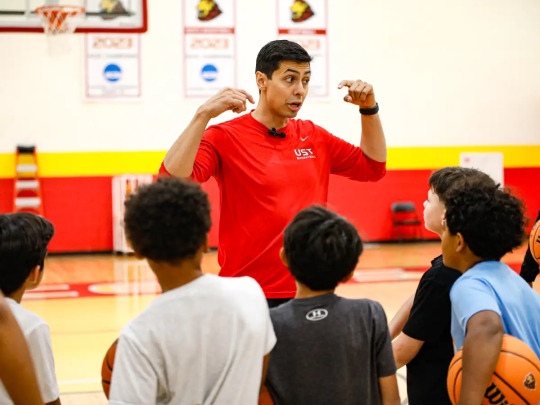
Basketball, a sport born in the late 19th century, has witnessed a remarkable evolution in training methods over the decades. In its early years, training primarily consisted of team-based practices focusing on fundamental skills like passing, shooting, and dribbling. Coaches relied on traditional drills and scrimmage games to develop players' abilities and strategies.
However, as the sport grew in popularity and competitiveness, so did the need for more sophisticated training approaches. The latter half of the 20th century saw the emergence of specialized training programs and coaching techniques aimed at honing individual skills. Players like Michael Jordan and Kobe Bryant became synonymous with the idea of relentless individual training, setting new standards for excellence on the court.
Advancements in sports science and technology further revolutionized basketball training, offering insights into biomechanics, nutrition, and recovery strategies. From high-tech training facilities to personalized workout regimens, the landscape of basketball training underwent a profound transformation, paving the way for the rise of individualized coaching and one-on-one sessions.
Benefits of 1-on-1 Basketball Training
Personalized Attention: One of the most significant advantages of 1-on-1 basketball training is the personalized attention that players receive from their coach. Unlike group practices where coaches must divide their attention among multiple players, individual coaching allows for focused, tailored feedback and instruction. Coaches can closely observe the player's technique, identify areas for improvement, and provide immediate corrections and guidance. This individualized approach ensures that players receive targeted support that addresses their specific needs and goals, leading to more efficient skill development and overall improvement.
Skill Development: One-on-one basketball training offers a unique opportunity to target specific skills and areas for improvement in a focused and intensive manner. Whether it's shooting mechanics, ball-handling skills, defensive techniques, or strategic decision-making, coaches can design customized training sessions that address the player's weaknesses and enhance their strengths. By breaking down complex skills into smaller, manageable components and providing repetitive drills and exercises, players can gradually refine their technique, improve their proficiency, and elevate their overall performance on the court. The concentrated nature of 1-on-1 training accelerates skill development and allows players to progress more rapidly than they might in a group setting.
Confidence Building: Beyond technical skill development, personalized training can have a profound impact on players' confidence and self-esteem on the court. The individualized attention and encouragement provided by coaches create a supportive and nurturing environment where players feel valued, respected, and empowered to take risks and push their limits. As players experience tangible improvements in their skills and performance through dedicated practice and guidance, their confidence grows, allowing them to play with greater assertiveness, poise, and composure during games. Moreover, the positive reinforcement and praise received during 1-on-1 sessions can help players develop a strong sense of self-belief and resilience, enabling them to overcome challenges and setbacks with confidence and determination.
The Role of Mental Preparation
Mental Toughness: In basketball, mental toughness is just as crucial as physical prowess. While dribbling, shooting, and defense are fundamental skills, staying composed under pressure, maintaining focus during intense moments, and bouncing back from setbacks can make all the difference between victory and defeat. That's where mental training comes into play.
One-on-one basketball coaching focuses on refining technical skills along with emphasizing mental resilience and fortitude. Through various techniques such as visualization, positive self-talk, and mindfulness exercises, players learn to cultivate a strong and resilient mindset that enables them to perform at their best, even in the face of adversity. By integrating mental training into their regimen, players develop the mental toughness needed to thrive in high-pressure situations and overcome challenges on the court.
Overcoming Challenges: Whether facing a formidable opponent, dealing with a string of losses, or navigating through personal struggles, players encounter numerous hurdles on their journey to success. One-on-one coaching provides a supportive and nurturing environment where players can develop the resilience and determination to overcome these obstacles.
Through personalized coaching, players receive individualized support and guidance tailored to their unique challenges and circumstances. Coaches help players identify their strengths, weaknesses, and areas for growth, empowering them to tackle challenges head-on with confidence and resilience. By instilling a growth mindset and fostering a culture of perseverance and grit, one-on-one coaching equips players with the tools and mindset needed to navigate through adversity and emerge stronger and more resilient than ever before.
Visualization and Focus: In the heat of competition, maintaining mental focus and concentration is paramount. Distractions abound, adrenaline runs high, and the pressure to perform can be overwhelming. That's where visualization and focus techniques come into play.
One-on-one coaching introduces players to visualization exercises and mental imagery techniques that help them mentally rehearse game situations, visualize success, and maintain focus during critical moments. By mentally preparing for challenges and envisioning themselves executing plays with precision and confidence, players develop a heightened sense of focus and concentration that translates into improved performance on the court. Additionally, coaches provide strategies for staying present, managing emotions, and controlling arousal levels, enabling players to stay composed and focused throughout the game.
Choosing the Right Trainer
Selecting the right trainer is a critical step in maximizing your potential and achieving success in basketball. Whether you're a beginner looking to improve your skills or an experienced player aiming to take your game to the next level, finding a qualified and experienced coach can make all the difference.
Qualities to Look For: Guidance on Selecting a Qualified and Experienced Trainer
Experience: Look for a trainer with a proven track record of success and experience working with players of all skill levels. A coach with years of experience understands the nuances of the game and can provide valuable insights and expertise to help you reach your goals.
Credentials: Consider the trainer's qualifications, certifications, and coaching credentials. A Certified coach has undergone formal training and education, ensuring they possess the necessary knowledge and skills to effectively coach and mentor players.
Personalized Approach: Seek out a trainer who offers a personalized approach to coaching, tailoring their instruction to meet your specific needs, strengths, and areas for improvement. A trainer who takes the time to understand your goals, challenges, and learning style can provide targeted feedback and guidance that accelerates your development.
Reputation: Research the trainer's reputation within the basketball community. Look for reviews, testimonials, and recommendations from past and current players to gauge their credibility, professionalism, and effectiveness as a coach.
Communication and Rapport: Importance of Communication & Rapport Between Player and Coach
Effective communication and rapport between player and coach are essential for a successful coaching relationship. Clear and open communication fosters trust, understanding, and collaboration, allowing both parties to work together towards common goals.
Communication Style: Assess the trainer's communication style and determine whether it aligns with your preferences and needs. A good coach should communicate effectively and respectfully, providing feedback and instruction constructively and encouragingly.
Listening Skills: Look for a coach who listens to your concerns, questions, and feedback. A coach who listens attentively and empathetically can better understand your needs and tailor their approach accordingly.
Trust and Respect: Trust is the foundation of any successful coaching relationship. Choose a coach you trust and respect and who demonstrates integrity, professionalism, and dedication to your development as a player.
Setting Goals: Significance of Setting Clear Goals and Expectations for the Training Sessions
Setting clear goals and expectations is essential for maximizing the effectiveness of your training sessions. When selecting a trainer, discuss your goals, aspirations, and expectations upfront to ensure alignment and clarity.
Specificity: Clearly define your goals and objectives for the training sessions, whether it's improving shooting accuracy, enhancing defensive skills, or increasing overall athleticism. Specific goals provide direction and focus, guiding the training process and measuring progress.
Realistic Expectations: Set realistic and achievable goals that challenge you to grow and improve but are also attainable within a reasonable timeframe. A good coach can help you set realistic expectations and develop a plan to reach your goals effectively.
Feedback and Evaluation: Establish a system for receiving feedback and evaluating progress throughout the training process. Regular assessments, check-ins, and feedback sessions with your coach allow you to track your development, identify areas for improvement, and adjust your training plan as needed.
From personalized attention and targeted skill development to confidence building and mental preparation, the benefits of one-on-one coaching are undeniable. By investing in individualized training, players gain access to a level of instruction and support that is tailored to their unique needs, goals, and aspirations. Through focused practice, expert guidance, and unwavering commitment, players can unlock their full potential and elevate their game to new heights.
But perhaps, beyond the technical skills and tangible results, the true value of one-on-one basketball training lies in the intangible qualities it fosters: resilience, determination, and self-belief. In the face of adversity, players equipped with the mental toughness and confidence instilled by personalized coaching rise to the challenge, pushing past obstacles and defying expectations.
So, as you lace up your sneakers and step onto the hardwood, remember the journey that lies ahead—the journey of growth, improvement, and self-discovery. And know that with the right trainer by your side, guiding and inspiring you every step of the way, the sky is truly the limit.
Elevate your game, embrace the challenge, and soar to new heights with the power of one-on-one basketball training.
0 notes
Text
what's the right thing to do ?
This is a summarized form of the concept of Utilitarianism ( context : Justice with Michael Sandel )

01 THE MORAL SIDE OF MURDER
There’s a challenging ethical dilemma: if faced with the decision, would you sacrifice one person to save five others? This sets the stage for a deeper exploration of moral reasoning. Through presenting variations of this scenario, each designed to complicate the moral choice further, our moral intuitions can lead to contradictory conclusions. The exercise reveals the complexity of ethical decision-making and the difficulty of defining right and wrong in absolute terms. Students actively participate, defending their diverse decisions, highlighting the nature of moral reasoning and the importance of examining the principles that guide our judgments.

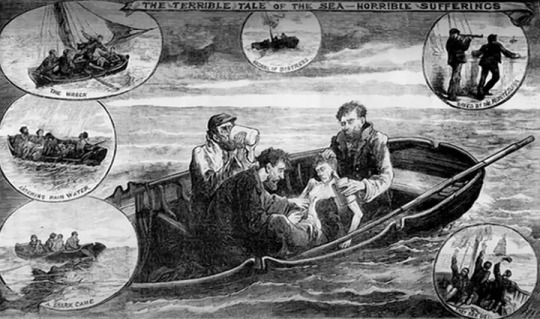
Utilitarianism, a moral philosophy proposed by Jeremy Bentham, a gripping 19th-century legal case of shipwrecked sailors as a discussion point. After being lost at sea for 19 days, the crew, driven by desperation, decides to kill and eat the weakest among them, the cabin boy, to survive. This harrowing story prompts a debate on the Utilitarian principle of maximizing happiness or welfare across society — often simplified to “the greatest good for the greatest number.” The case challenges students to consider the moral weight of actions aimed at survival against the backdrop of Utilitarian ethics, sparking discussions on whether the pursuit of the greatest overall happiness can justify actions that harm individuals.
02 PUTTING A PRICE TAG ON LIFE
Jeremy Bentham’s utilitarian philosophy, which promotes the idea of achieving the greatest good for the greatest number of people, is a concept still applied in contemporary society, notably in the form of cost-benefit analysis. This approach often involves assigning monetary values to human lives to guide significant business or policy decisions. However, this method raises ethical concerns, particularly about whether it’s just to prioritize the preferences of the majority, especially when those preferences might lead to unfair or harmful outcomes for minorities or when the majority’s values are questionable.
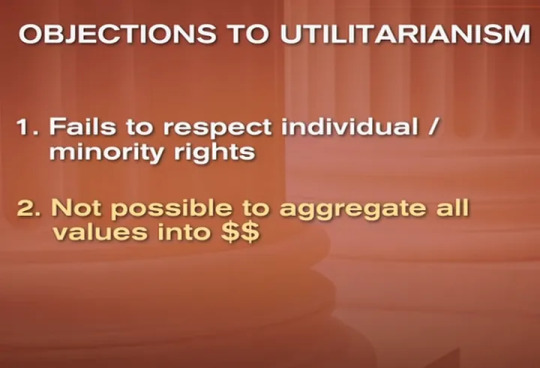
To engage with Mill’s theory, interactive examples, such as showing video clips from “The Simpsons,” the reality TV show “Fear Factor,” and Shakespeare’s “Hamlet,” to spark a debate among students about which of these represents the highest form of pleasure. This exercise is designed to make students consider Mill’s distinction between higher and lower pleasures and to reflect on how these concepts influence our understanding of happiness, value, and justice in society. The discussion aims to challenge students to think critically about the application of Utilitarian principles and the implications of valuing certain types of experiences over others in the pursuit of the greater good.
03 FREE TO CHOOSE
Libertarians advocate for minimal government intervention in people’s lives, emphasizing the importance of individual freedom and choice. Robert Nozick, a key figure in libertarian philosophy, believes that individuals have the right to live as they choose without government interference. This includes opposition to laws aimed at protecting individuals from their own actions, enforcing moral standards, or redistributing wealth from the affluent to the less well-off. Nozick uses high earners like Bill Gates and Michael Jordan as examples to argue that taxing the wealthy to fund social programs for the poor peoples to forced labor, as it compels individuals to work for the benefit of others against their will.
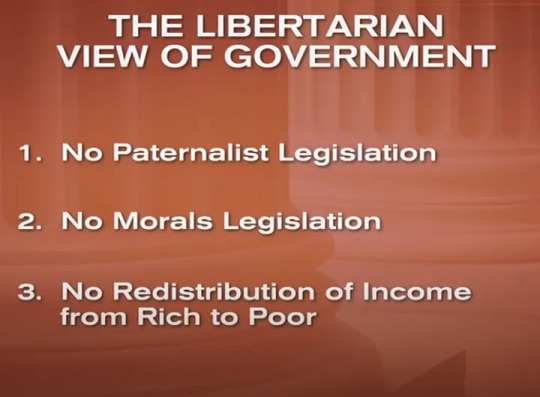
In this context, students are encouraged to engage critically with libertarianism. A group named “Team Libertarianism” is tasked with addressing these critiques, defending the libertarian stance against redistributive taxation and government intervention. The discussion explores the balance between individual rights and societal obligations, questioning the extent to which government should play a role in ensuring a fair distribution of resources and opportunities within society.
04 THIS LAND IS MY LAND
John Locke, a prominent philosopher, argued that every person inherently possesses certain rights that are inalienable, meaning no government has the authority to strip them away. These rights, which include the right to life, liberty, and property, exist in what he described as the “state of nature,” a period before the formation of governments and laws. Locke believed that these natural rights are underpinned by natural law, understandable through reason, which dictates that these rights cannot be surrendered or forcibly taken from another.
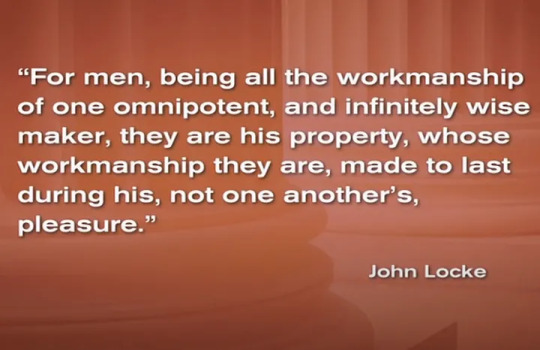

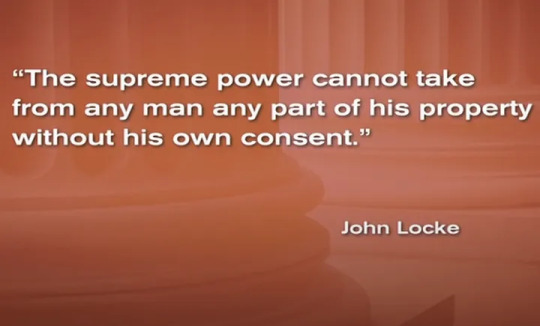
The question then arises: What happens to these natural rights when we agree to live within a society governed by laws? How does this social contract affect our rights, especially when faced with governmental actions like taxation, which could be seen as infringing on our right to property?
Locke’s answer lies in the concept of “tacit consent.” He suggests that by choosing to live within a society, we implicitly agree to abide by the laws and decisions made by the majority, including tax laws. This tacit consent to the system of governance and its laws means that taxation, provided it is fairly applied to all members of society without unjust discrimination, is a legitimate exercise of governmental power. It does not infringe on individual rights but rather is a part of the social contract we enter into, acknowledging that certain personal freedoms may be limited for the benefit and functioning of society as a whole.
05 HIRED GUNS
During the Civil War, people were drafted to join the military but had the option to pay someone else to go in their place. This situation brings up a debate on whether this was truly a choice or if it was more about force, especially since it often appealed to those in financial need from lower social classes to become substitutes. This historical example sparks discussions in classrooms today about modern military recruitment. There’s a question of whether today’s military, which is said to be voluntary, is truly so when many recruits come from poorer backgrounds. The debate extends into what patriotism means and whether there’s a duty for citizens to serve their country.
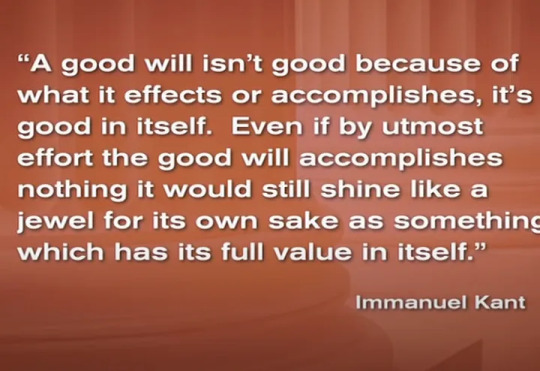
The conversation also explores how free-market concepts apply to issues like reproductive rights today, specifically through the lens of sperm and egg donation as a form of business. The discussion goes deeper with the case of “Baby M,” where Mary Beth Whitehead agreed to be a surrogate mother for a fee but then decided she wanted to keep the baby after birth, leading to a legal battle. This case opens up debate on the ethics of treating human life as a commodity, the complexities around consent and contracts in such situations, and the significance of maternal rights. These topics encourage critical thinking about the intersection of economics, law, and ethics in contemporary society.
06 MIND YOUR MOTIVE
Immanuel Kant was a philosopher who believed that what sets humans apart from animals is our ability to reason and make choices freely. According to Kant, our actions are truly valuable and moral when they are done out of a sense of duty and for the right reasons, rather than for personal gain. For example, a shopkeeper who chooses not to cheat a customer. If the shopkeeper’s honesty is driven by concern for his reputation or business rather than by principle, Kant would argue that the action isn’t morally commendable. Kant’s view is that moral actions stem from doing what’s right simply because it’s right.


Kant’s philosophy emphasizes that our deeds are morally right when they’re done for noble reasons, not just to benefit ourselves. This idea is illustrated through the story of a 13-year-old boy who, after winning a spelling bee, admitted to a mistake he made during the competition. This act of honesty, even when it could have cost him his victory, serves as an example of Kant’s ideal of ethical behavior. Kant suggests that when we’re faced with a decision, we should consider whether the action we’re about to take would still be right if everyone did the same. He asks us to think about whether our actions could serve as a universal rule for everyone to follow, highlighting the importance of intention and principle in our decisions.
07 A LESSON IN LYING
Immanuel Kant believed strongly in always telling the truth because he thought lying takes away a person’s honor. However, people question his belief by imagining a situation where telling the truth could harm someone. For example, if a friend is hiding in your house from a dangerous person who then comes to your door asking if your friend is there, what do you do? This raises the question of whether it’s okay to give answers that are technically true but meant to mislead, like how former President Clinton carefully chose his words to avoid admitting his affair with Monica Lewinsky without outright lying.
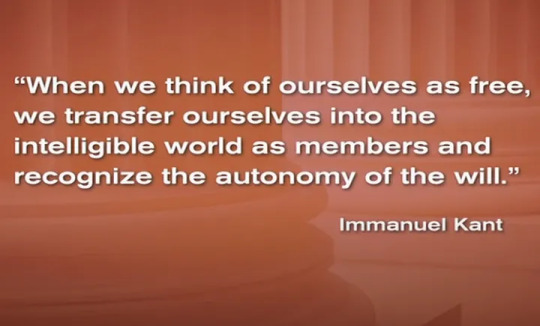


John Rawls, another philosopher, talks about how to make fair and just rules for society. He suggests pretending that everyone making these rules doesn’t know anything about themselves — like their wealth, race, or what they want. This idea, called the “veil of ignorance,” is supposed to make sure that the rules they come up with are fair for everyone. Rawls believes that this is the best way to ensure fairness and justice in the laws that govern us.
08 WHATS A FAIR START?
John Rawls introduces his influential concept of the “veil of ignorance” as a way to think about justice and fairness in society, particularly regarding social and economic equality. Rawls suggests imagining a scenario where individuals make decisions about the rules of society without knowing their own position within it. This means not knowing whether they would be rich or poor, advantaged or disadvantaged. Rawls theorizes that under these conditions, people would likely choose a system that minimizes risks for everyone by ensuring a more equitable distribution of wealth. The idea is that without knowing one’s future status, people would prefer a safety net that protects all citizens from the worst forms of poverty and inequality.

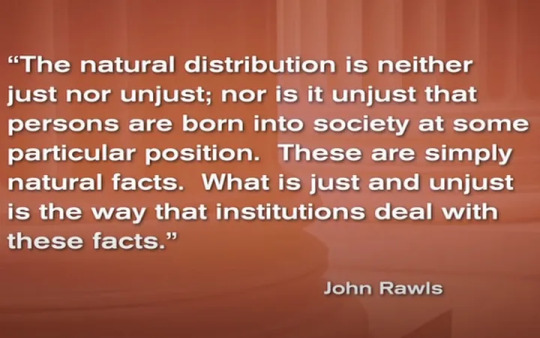

The three main theories of how society should distribute income, wealth, and opportunities: libertarianism, which emphasizes freedom from government intervention; meritocracy, which justifies inequalities based on talent and effort; and egalitarianism, which advocates for a more equal distribution of resources. Adiscussion on the fairness of pay differentials, illustrated by comparing the salaries of Justice Sandra Day O’Connor and television personality Judge Judy. This disparity raises questions about the fairness of income distribution and what constitutes just compensation.
John Rawls’ perspective that many factors contributing to personal success, such as luck, genetics, and family background, are beyond an individual’s control. This challenges the notion that wealth and status are always earned through merit. The role of effort and how society should value hard work, especially when effort is combined with circumstances outside one’s control. This discussion encourages students to think critically about the principles that should guide the distribution of wealth and opportunities in a fair and just society.
09 ARGUING AFFIRMATIVE ACTION
In the discussion on affirmative action and college admissions, students struggle with the fairness and implications of considering race and ethnicity as factors in the selection process. This debate centers around whether such policies are just, whether they infringe upon individual rights, and how they compare to other admissions preferences, like those given to exceptional athletes. Supporters of affirmative action argue that promoting diversity within educational institutions is a valid and essential goal, contributing to a richer learning environment and helping to redress historical inequalities. On the other side of the argument, some contend that admissions should be based solely on a student’s efforts and achievements, emphasizing merit and the individual’s accomplishments without regard to race or ethnicity. This debate touches on fundamental questions about equality, meritocracy, and the role of educational institutions in society.


Aristotle’s perspective on justice, which emphasizes giving people what they deserve based on their virtues and merits. Aristotle’s view requires considering the purpose or the end goal of what is being distributed — whether it be wealth, opportunities, or positions in society. According to Aristotle, justice involves matching individuals’ virtues and capabilities with the roles or resources they receive. This notion suggests that different criteria might be relevant for different kinds of distribution, depending on the goals of the institution or society in question. For example, when it comes to education, one could argue that the purpose of a university is not only to reward past achievement but also to cultivate a diverse and vibrant community that prepares students to contribute to a pluralistic society. This perspective can provide a framework for considering affirmative action policies, weighing the goal of diversity against the principle of rewarding individual achievement.
10 THE GOOD CITIZEN
Aristotle’s theory of justice, which emphasizes aligning distribution with the purpose or end goal of an activity, provides an interesting lens through which contemporary debates, such as the case of Casey Martin and the PGA, can be examined. Casey Martin, a professional golfer with a disability that impairs his ability to walk golf courses, requested to use a golf cart during tournaments, a request that sparked controversy and debate. Students use Aristotle’s framework to debate whether the PGA’s decision to initially deny Martin’s request was just, focusing on the essential purpose of golf. Is the physical walk between shots an integral part of the competition, testing a golfer’s endurance and skill, or is the true test of golfing ability found in the skill of making the shots themselves? This discussion revolves around how closely the rules and accommodations in sports should align with their fundamental objectives and the nature of fair competition.


A critical aspect of Aristotle’s philosophy that poses a significant challenge to modern sensibilities: Aristotle’s defense of slavery. Aristotle argued that some people were naturally suited to be slaves, a viewpoint that starkly contrasts with contemporary understandings of freedom and equality. This part of Aristotle’s thought leads to broader discussions among students about potential limitations and objections to his philosophical framework. Students debate whether Aristotle’s views inherently limit individual freedom or if his ideas on justice and the good life can be separated from his acceptance of slavery. This conversation encourages a critical examination of how historical philosophical theories apply to modern contexts, questioning the extent to which Aristotle’s ideas on virtue, purpose, and justice can inform contemporary ethical debates without endorsing his more problematic positions.
11 THE CLAIMS OF COMMUNITY
The objections of Immanuel Kant and John Rawls to Aristotle’s views, emphasizing the importance of individual freedom and the ability to choose one’s own path in life. This leads to a discussion on the communitarian view, which considers how individuals balance their obligations to family, community, and country.

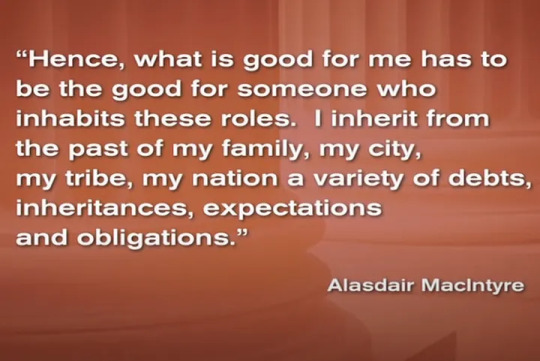
The debate focuses on the tension between loyalty to family or smaller communities and duties to the broader society. Students discuss various scenarios to determine when loyalty might outweigh broader societal duties, engaging with the ethical dilemmas of balancing personal connections against commitments to justice and the common good. The conversation aims to deepen understanding of the principles guiding moral decisions and the complex interplay between personal loyalties and societal responsibilities.
12 DEBATING SAME-SEX MARRIAGE
When principles of justice hinge on the perceived moral value of the rights in question, society faces a challenge due to varying beliefs about what constitutes the “good.” This issue becomes particularly evident in debates like that of same-sex marriage, where differing views on the morality of sexuality and the purpose of marriage clash. Students are tasked with discussing whether it’s feasible to separate the moral acceptability of sexual preferences from the aims of marriage, reflecting on how diverse conceptions of the good influence justice and rights.






Is discussing the good life necessary to understand justice and rights? And, can we even have a rational debate about what constitutes a good life? These questions guide a deeper exploration into whether the government should define marriage’s purpose. while consensus on moral philosophical issues might be elusive, the ongoing debate is both inevitable and valuable. It serves as an essential process for understanding diverse values and fostering a richer appreciation of various perspectives within society.
Conclusion
The above article was written with keen observation of the lectures by Michael Sandel and gives the reader a well defined overview of the whole series in a summarized form . Enjoy :)
0 notes
Text
Basketball is a team sport played on a rectangular court by two five-player groups. Played primarily indoors when organized in leagues, basketball is often also played outdoors in less organized “pick-up” games. The objective of the game is to throw (shoot) a ball (called the basketball) through the top of a circular band (referred to as the rim) that has cord hanging around its circumference (with both being named the basket), which is itself attached to a backboard.
Basketball is commonly also nicknamed “B-ball” and “hoops.” Men and women in all areas of the world and of all ages play basketball, making it one of the more popular organized sports. Some of the more popular professional basketball players in the United States have included Kareem Abdul-Jabbar, Larry Bird, Kobe Bryant, Wilt Chamberlain, Michael Jordan, Shaquille O'Neal, Magic Johnson, LeBron James, Yao Ming, and Bill Russell. Whether the game is played for fun or money, basketball provides a healthy workout for the body because it is a fastpaced sport that involves much running, jumping, rebounding, passing, dribbling, and various other beneficial physical activities.
The objective of the game of basketball is to have scored more points at the end of a specified time period than the opposing team. This is done by shooting the basketball through a rim, which results in one, two, or three points being scored. Whether one wins or loses after completing a game of basketball, each player's strenuous activities results in a physically fit body. Regularly playing basketball also provides great workouts and good cardiovascular health. It also helps to control high blood pressure. For instance, the Mayo Clinic states, “Flexibility and strengthening exercises such as lifting weights are an important part of an overall fitness plan, but it takes aerobic activity to control high blood pressure. And you don't need to spend hours in the gym every day to benefit. Simply adding moderate physical activities to your daily routine will help. Any physical activity that increases your heart and breathing rates is considered aerobic exercise, including: …Active sports, such as basketball or tennis.”
When i was 12 years old i start to play basketball and helps me to recover and ease the depressions,problems, anxiety,and overall sadness.i use to play basketball because of my dad.He is a very good player famous and our city and it inspires me to play well.Basketball also help me to have friends actually im just a kid and always alone and introvert but because of basketball.I get hype and Didn't scared to communicate at all.and on this thing/sport i can express my feelings and thoughts.I really love basketball as how i love my self
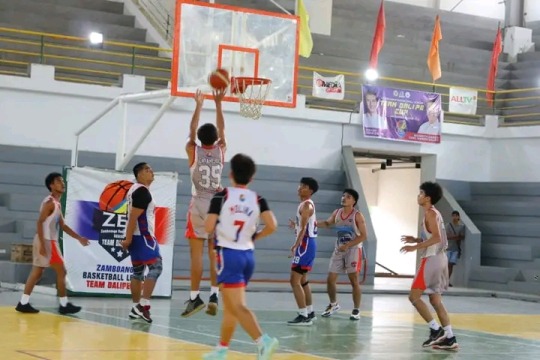
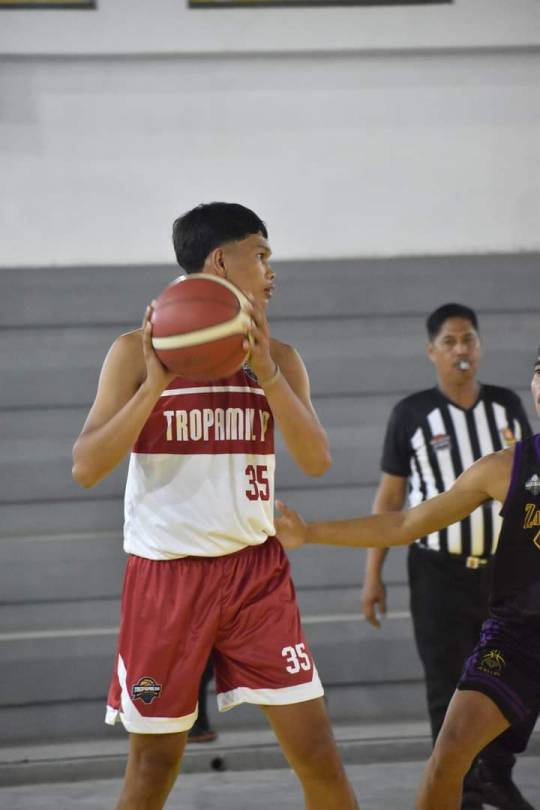
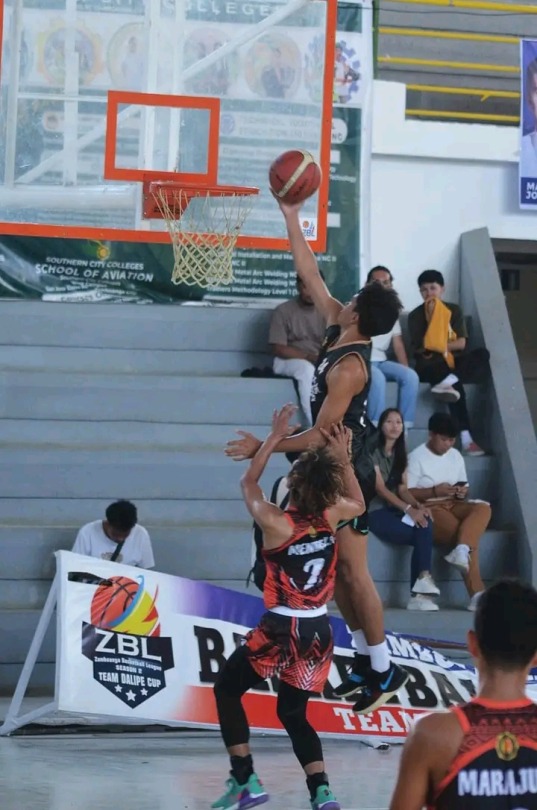
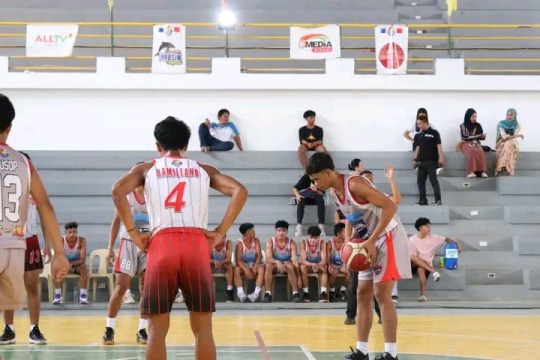
1 note
·
View note
Text
The Power of Early Discipline: Lessons from a Young Paperboy
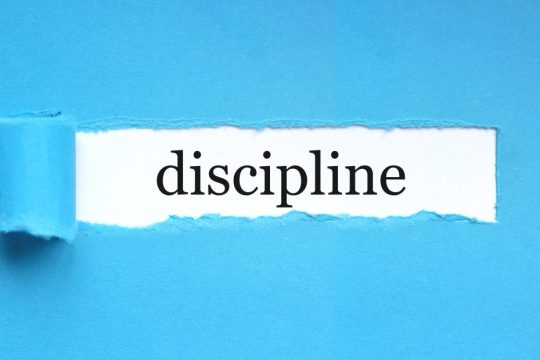
Imagine the sun barely cracking the horizon, most people still nestled in their beds, as a young paperboy mounts his bike. Armed with a bag full of newspapers, he takes on the break of dawn with unwavering focus. This isn’t just a gig for him; it’s a masterclass in discipline that he attends every morning. From this seemingly simple job, he learns the tenets of work ethic, punctuality, and responsibility. Discipline, often understated, serves as the backbone for any form of success. This article explores the powerful life lessons we can all learn from such an early exercise in discipline. Whether you’re an aspiring entrepreneur or someone looking to instill better habits, prepare to discover how discipline, like that of a dedicated paperboy, can be the cornerstone of unprecedented success.
The Anatomy of Discipline
The Crucial Elements That Make Up Discipline
Discipline isn’t just a singular trait; it’s a complex structure composed of various elements such as self-control, consistency, routine, and time management. Self-control gives us the ability to choose long-term gratification over short-term pleasures. Consistency ensures that we stick to our commitments, even when it’s challenging or inconvenient. Routine provides a structured way to organize our daily lives, helping us make the most of our time. And time management allows us to allocate our time where it will be most effective.
How the Paperboy Applies These Elements
Now, think back to our young paperboy. He’s up before the sun, an act of self-control that sacrifices extra sleep for the responsibilities awaiting him. Consistency? He delivers those papers every day, rain or shine. His daily route is a well-tuned routine, meticulously planned to optimize the path and ensure timely deliveries. Time management comes into play here, too; he knows exactly how long each section of his route takes, allowing him to complete his morning chores or schoolwork in the remaining time before heading to school.
How Discipline Leads to Success
Real-World Examples of Successful People Who Credit Discipline
Many iconic figures credit their extraordinary achievements to discipline. From athletes like Michael Jordan to entrepreneurs like Elon Musk, discipline features as a common thread in their success stories. Michael Jordan spent countless hours honing his skills, even after he became a superstar. Elon Musk’s well-documented work schedule demonstrates a high level of discipline, juggling multiple groundbreaking projects at once. Read More
1 note
·
View note